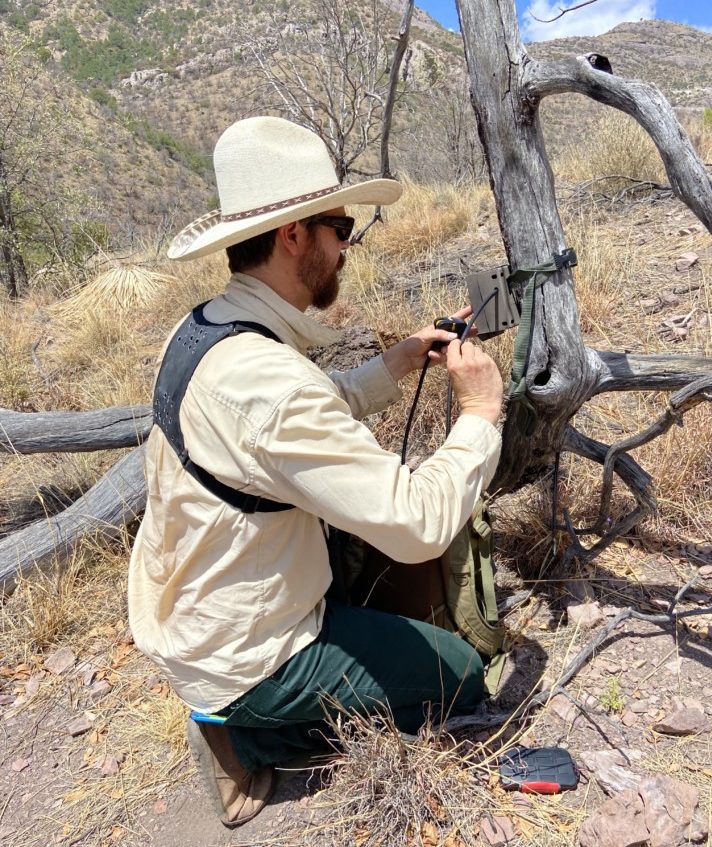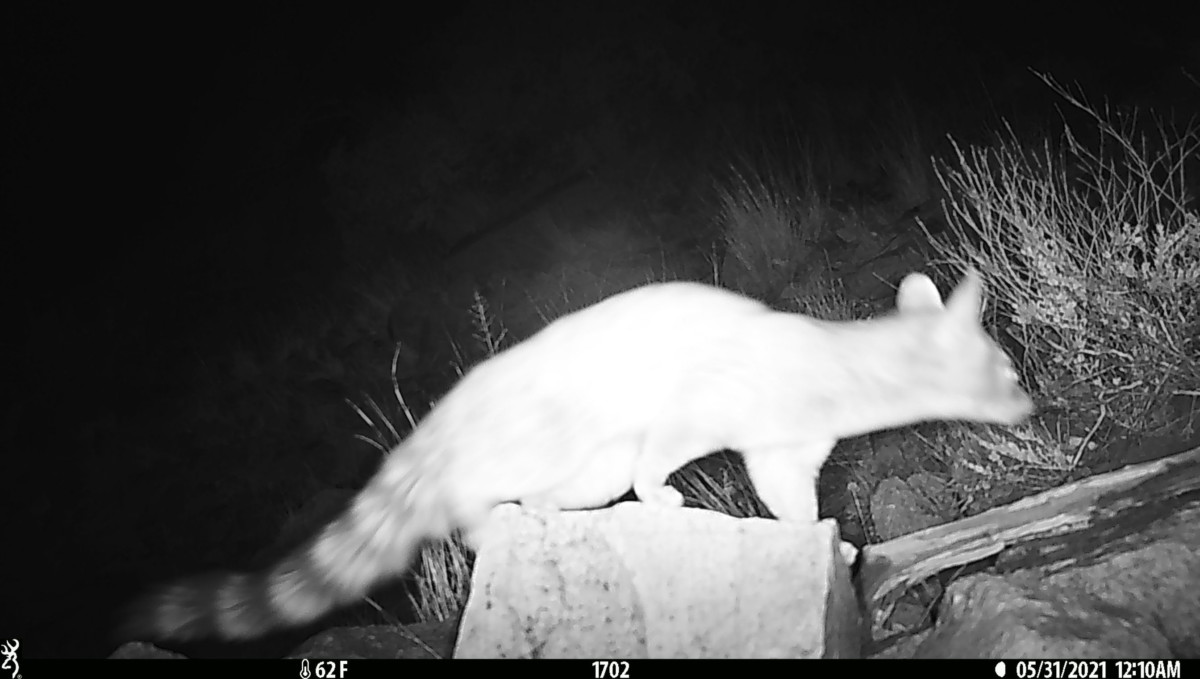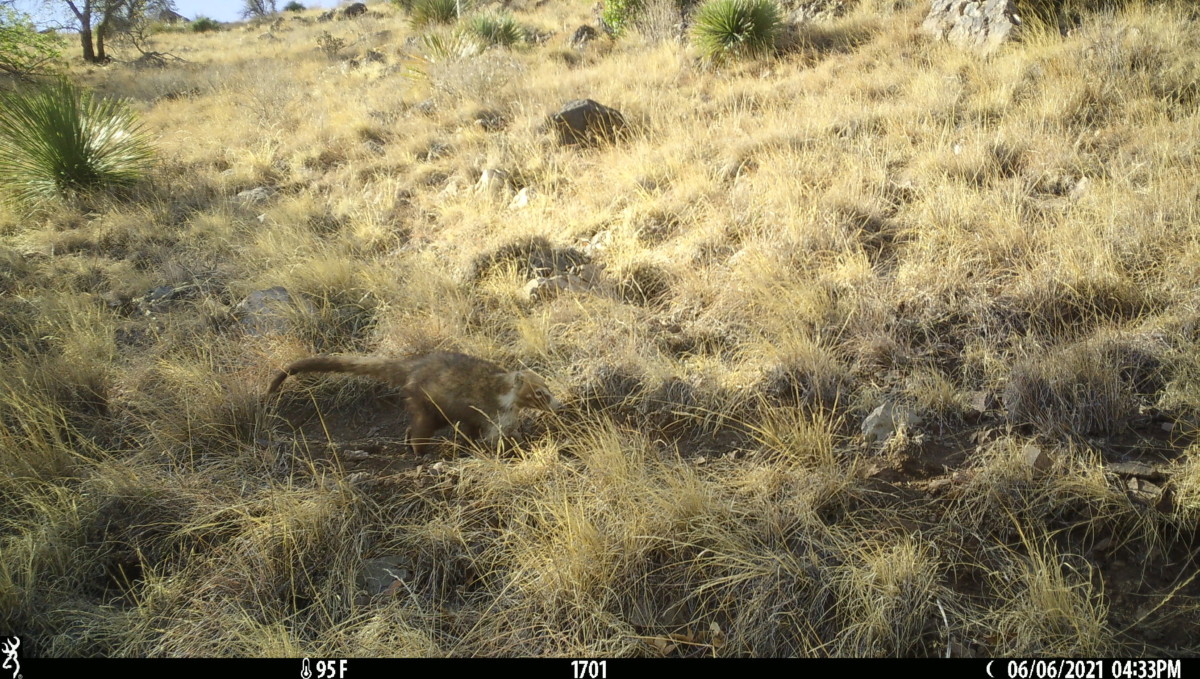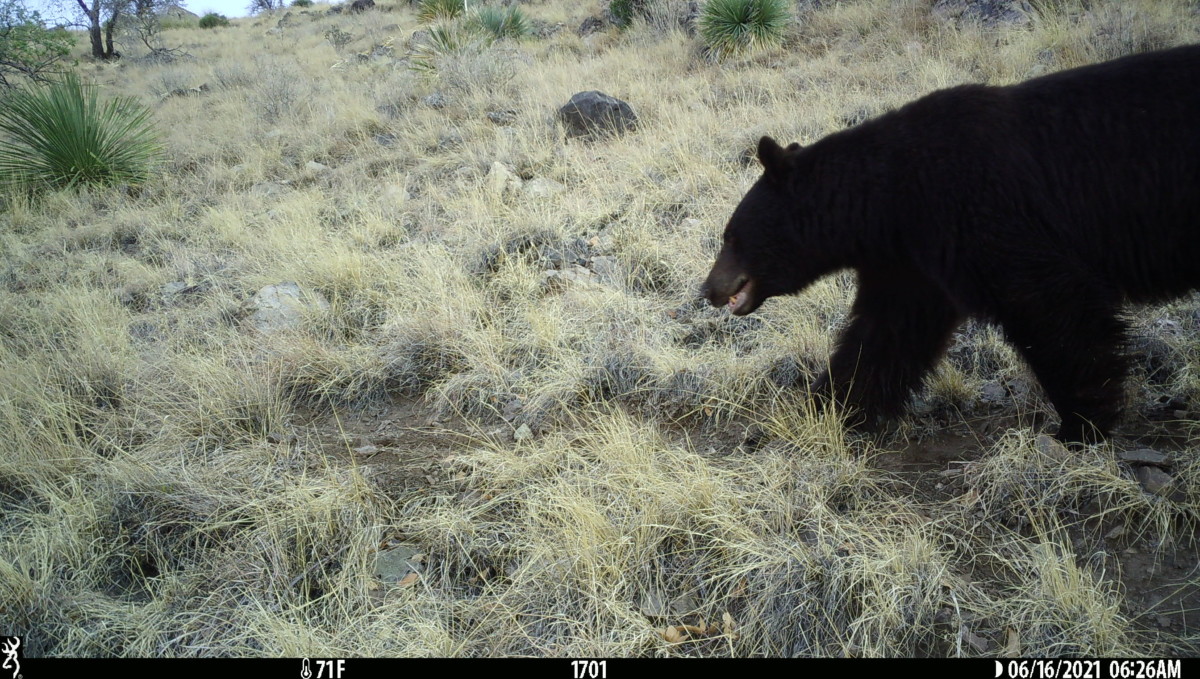Last month, we placed five new wildlife cameras in Coronado National Memorial.
These camera additions extend our Border Wildlife Study eastward into the zone where the border wall was extended by the Trump administration in 2020. The cameras are placed within oak woodland habitat on the southern steep slopes of the Huachuca Mountains—about 1.5 miles of the U.S.-Mexico border.
As the SIA field team hiked in last week to check the cameras, we chatted excitedly, wondering aloud about which animals would show up on these new cameras first. While we hoped to see jaguar and ocelot, we did find some marvelous photos of our Sky Island species, including American black bear, ringtail, and white-nosed coati!
The effects of the extreme drought are apparent in the oak woodland and grasslands along the border. We are eagerly waiting for monsoon rains to quench the thirst of these spectacular borderland Sky Islands.

Caption: Stewardship Specialist Bryon Lichtenhan hikes to check cameras in Coronado National Memorial on the slopes of the Huachuca Mountains.

Caption: Bryon unlocks a Border Wildlife Study camera box to swap memory cards and collect photographs.
Caption: A photo of the first black bear detected by a wildlife camera in the Eastern Huachuca Mountains.
 Caption: A ringtail perches on a rock in front of one of our wildlife cameras in the Eastern Huachuca Mountains.
Caption: A ringtail perches on a rock in front of one of our wildlife cameras in the Eastern Huachuca Mountains.
 Caption: A lone white-nosed coati roams past a wildlife camera at Coronado National Memorial.
Caption: A lone white-nosed coati roams past a wildlife camera at Coronado National Memorial.


